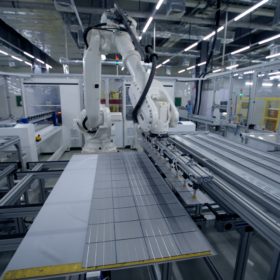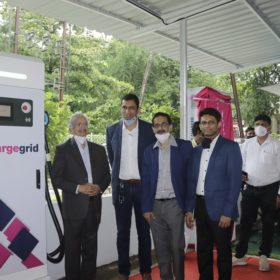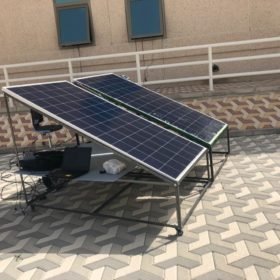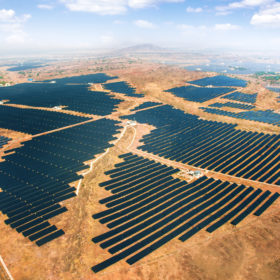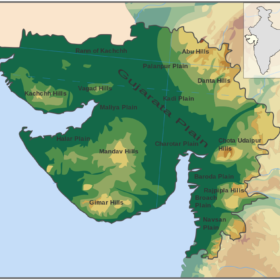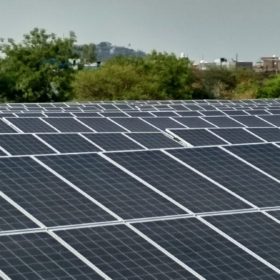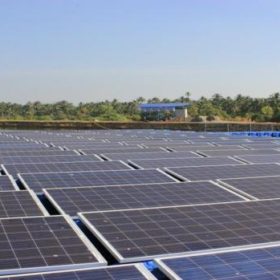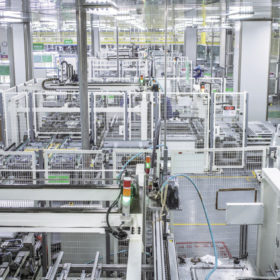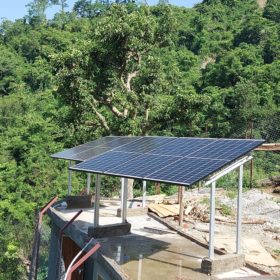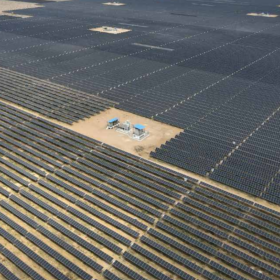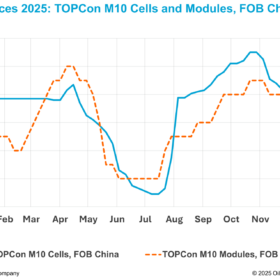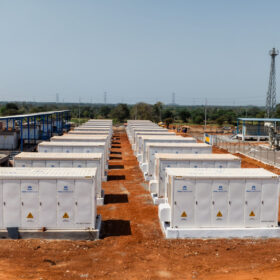No excuses, India must ramp up solar manufacturing to reduce reliance on imports
Through various initiatives and schemes, the Indian government has created a conducive environment for industry stakeholders to expand domestic manufacturing. The industry should seize the opportunity to ramp up capacity and manufacture emerging technologies such as monocrystalline (mono-Si), bifacial and half-cut cells, micro-inverters, and tracking equipment, all of which promise further solar efficiency gains over the coming years.
Hyderabad International Airport adds a second 5 MW solar plant
With this, the GMR Hyderabad International Airport now has an aggregate 10 MW solar capacity operational for captive use.
Magenta opens India’s largest public EV charging station
The Magenta electric vehicle charging station in Mumbai has 21 AC/DC chargers, including four DC chargers of 15-50 kW capacity and 17 AC chargers of 3.5-7.5 kW capacity.
Solar module cooling techniques for the desert
Saudi scientists have tested several cooling technologies for solar panels and have found that active techniques work better than passive ones under harsh climatic conditions. The most effective one consists of a system based on four heat pipes immersed in a box of liquid, as liquid bulk, integrated with the back of the solar panel.
NHPC tenders 600 MW solar EPC work in Rajasthan
The state-owned hydropower producer has already identified the land for the solar project in village Deora of the Jaisalmer district. It shall acquire the land on a long-team lease basis to develop the project.
NTPC to set up India’s largest solar park at Rann of Kutch
The state-run power producer will set up a 4.75 GW solar park at Rann of Kutch—a saline desert in the Indian State of Gujarat.
Oriano sees solar project orders surging to 350 MWp
The Mumbai-headquartered solar developer and EPC company is targeting a portfolio of 1+ GW by 2022, with growth fueled by an increased interest in commercial and industrial open-access segment.
SECI tenders 100 MW solar in Chhattisgarh
Bidders have until September 9 to lodge their interest in engineering, procurement, and construction of a 100 MW solar project. The responsibility for the land arrangement lies with the installer.
JinkoSolar claims 23.53% efficiency for n-type, TOPCon, monocrystalline panel
The PV module relies on Jinko’s TOPCon mono cell technology, for which a record efficiency of 25.25% was announced in late May. TÜV Rheinland has confirmed the result.
Solar-plus-storage at a hilltop ashram
Loom Solar has installed a solar plus storage system at a small ashram in the hills of Tehri Garhwal, Uttarakhand. The system comprises 6x440W Shark Super high-efficiency PV panels, a 5kWh (100Ah/51.2V) Atom lithium battery, and a 5kVA high-frequency design (string) inverter.
